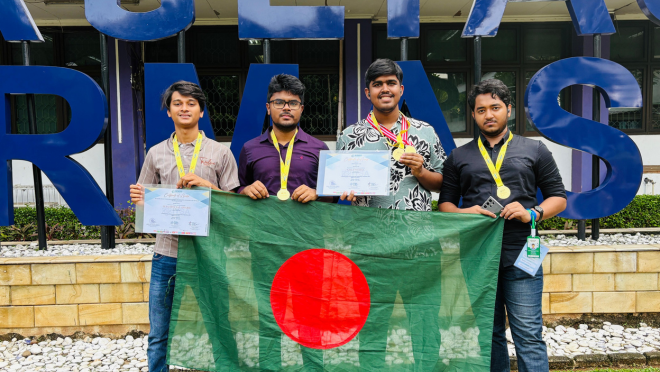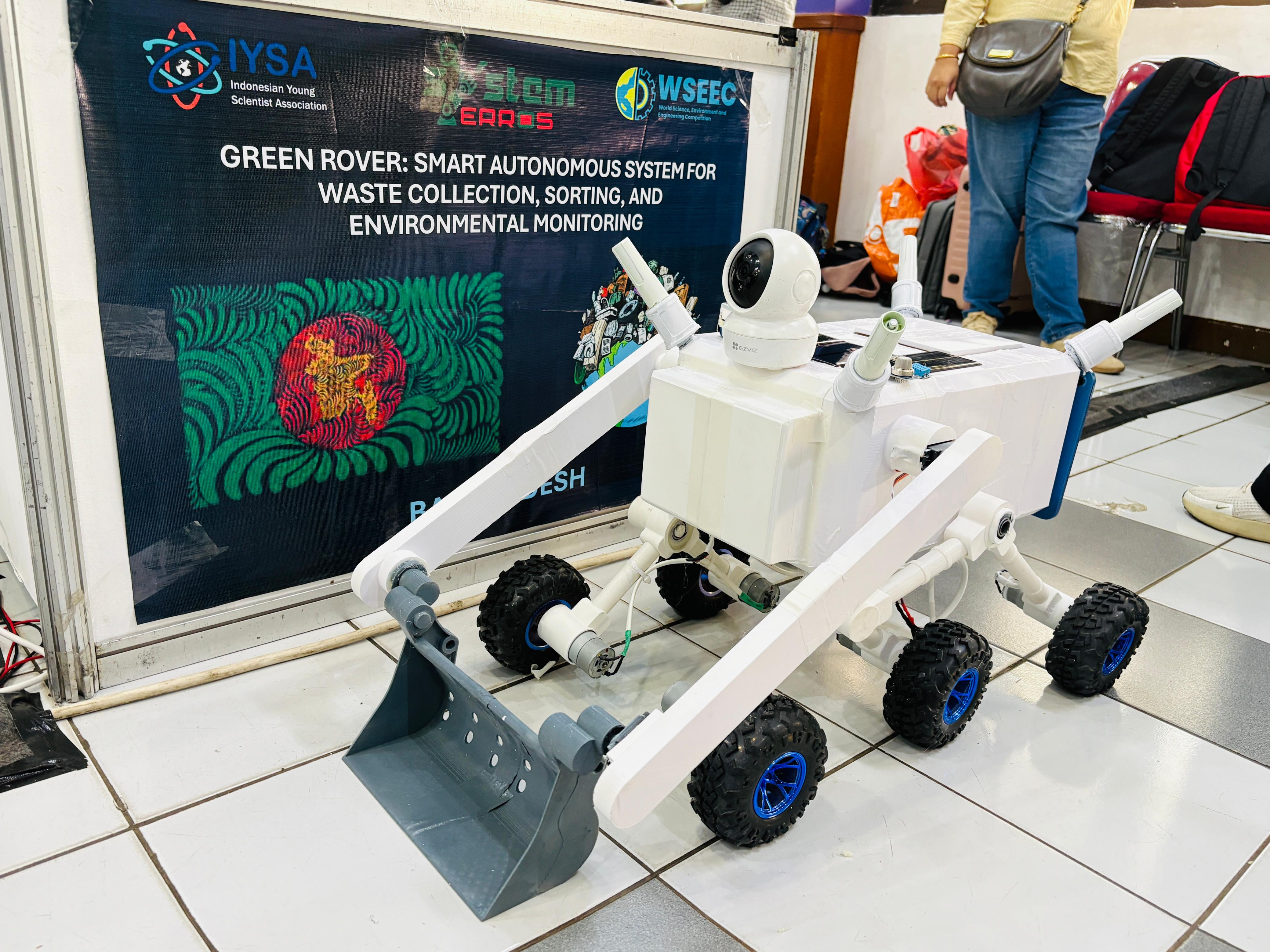Team System Error builds autonomous waste collection system
Team System Error builds autonomous waste collection system

Team system error, consisting of Md Tanjir Arafat, Mehran Islam Mahim, Md Reain Shahrior Prottoy and Nur Hossain Asif, has developed a revolutionary method to tackle the problem of local waste mismanagement. Their creation, Green Rover, is a smart autonomous robotic system that not only collects and sorts waste but also monitors environmental conditions in real-time. We have interviewed the team leader, Md Tanjir Arafat, to know about their journey to this momentous discovery.
From observation to innovation
The idea for such a system came into fruition by observing the surroundings. “We began by identifying the types of waste most common in our surroundings,” says Arafat. Arafat also revealed that most of the technologies used in the project were self-taught by their teammates, as they did not receive any sort of outside mentorship.
Remarkably, the team achieved their breakthrough largely through self-directed learning and resourcefulness. “We didn’t have formal mentorship, but we used online communities, datasheets, and open-source platforms to guide our work.” The team’s methodology combined digital resources with practical experimentation. “We also used simulation tools and physical testing to validate our system,” Arafat explains. This blend of virtual and physical testing ensured that their theoretical models translated effectively into real-world performance.

The robot operates autonomously, navigating both indoor and outdoor spaces while detecting different types of waste. “The robot autonomously navigates spaces, detects waste types, and sorts them while simultaneously sending real-time environmental data to the cloud via ThingSpeak for monitoring and analysis,” Arafat details. This dual functionality—waste management and environmental monitoring—addresses the pressing issue of improper waste disposal that leads to pollution, blocked drainage, and harmful gas emissions.
The technical architecture centres around an ESP32 microcontroller, chosen for its robust data communication capabilities. The team integrated various sensors including gas, humidity, dust, and DHT11 sensors, along with LCD displays for real-time feedback. The system communicates with ThingSpeak, a cloud platform that allows for lightweight data handling and real-time monitoring.
Challenges
Like any creative endeavour, Green Rover had its technical and practical challenges. “We faced difficulties with sensor calibration, internet connectivity for cloud updates, and power management,” Arafat admits. These obstacles, common in robotics projects, required systematic problem-solving approaches.
The development process involved extensive environmental testing to ensure accuracy. “We tested the robot in various environments and adjusted sensor thresholds to ensure accurate waste detection and sorting,” Arafat notes. This real-world testing phase was crucial for calibrating the sensors to perform effectively across different conditions and waste types.
Winning Gold at WSEEC 2025
This year, 293 teams competed at the WSEEC from 14 countries, including Indonesia, Malaysia, and Thailand. WSEEC 2025 was organised by the Indonesian Young Scientist Association (IYSA) in collaboration with Universitas Pancasila.
At the event, 234 teams competed online and 59 teams competed onsite in Indonesia. The four-member team brought together diverse educational backgrounds and shared expertise. “Our team came together with a shared interest in robotics and sustainability,” Arafat noted\
“Judges praised our use of real-time environmental monitoring and the practical potential of our project,” says Arafat. Feedback from other teams has provided valuable direction for future development. “Some teams also suggested we integrate image-based waste classification, which we plan to explore in the next version.”
Future ambitions
Looking ahead, the team has ambitious plans for Green Rover’s evolution. “Our next steps include enhancing its mobility, applying AI-based waste recognition, and developing a solar-powered version,” Arafat outlines. These enhancements would address sustainability concerns while improving the system’s autonomous capabilities.
Team System Errors’ success with Green Rover demonstrates how young Bangladeshi innovators are positioning themselves at the forefront of environmental technology. By combining local problem identification with global technological trends, they’ve created a solution that addresses immediate community needs while contributing to broader sustainability goals.


